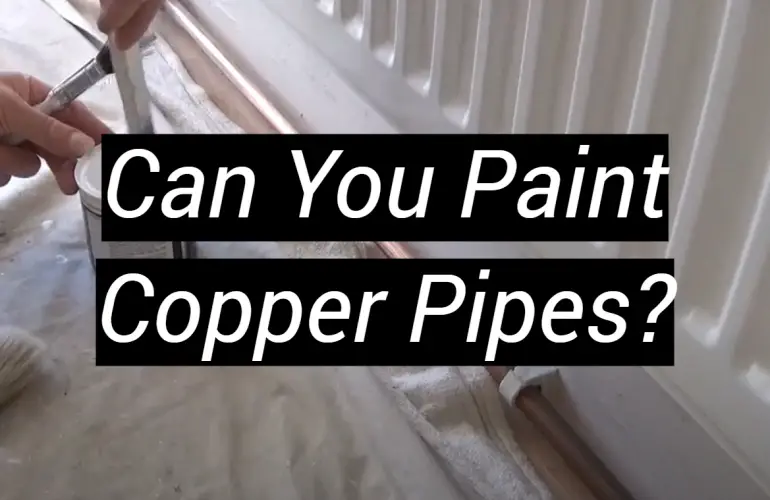Do you have copper pipes in your home? If so, you may be wondering if it’s possible to paint them. The good news is that it is possible to paint copper pipes, but there are a few things you need to keep in mind. This blog post will discuss how to paint copper pipes and the best ways to do it. It will also cover the pros and cons of painting copper pipes. So, if you’re thinking about giving your home a fresh new look, read on!
Why Do Plumbers Use Copper Pipes?
Copper pipes are one of the most commonly used materials in plumbing systems and for good reason. Copper is highly durable and resistant to corrosion, which means it will last for many years without breaking down or leaking. Additionally, copper is easy to shape and bend into different shapes when necessary, making it extremely versatile and customizable for any plumbing system. It is also very economical since it is relatively cheap compared to other piping materials like PVC or metal alloys. Finally, copper pipes can be connected with solder joints, allowing for a secure connection that won’t corrode or break over time. All these factors combine to make copper pipes an ideal choice for both residential and commercial plumbing projects.
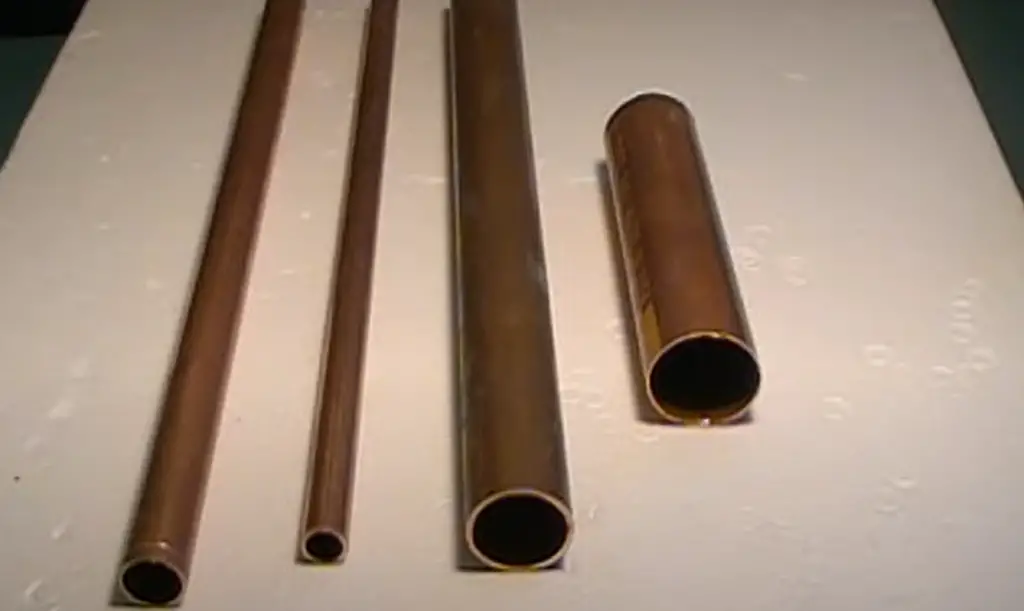
In addition to its practical qualities, copper also adds aesthetic value to a plumbing system.
For those looking for added protection, they can even coat their copper pipes with a lacquer sealant to further protect them from corrosion and ensure lasting use [1].Basics of Copper Plumbing
Copper plumbing is one of the most common and reliable types of plumbing used in homes today. It is durable, easy to work with, corrosion-resistant, and relatively inexpensive compared to other materials. Copper pipes can be bent and shaped into almost any configuration needed for a plumbing job, making them an ideal material for complex projects.
The basics of copper plumbing involve understanding the different types of copper available, as well as knowing how to properly measure, cut, and join copper pipes together using fittings. In addition, you will need to know how to identify potential problems during installation such as leaks or water pressure issues. Taking the time to understand these fundamentals will help ensure a successful project that lasts for years to come [2].
Should You Paint Copper Pipes?
If you have copper pipes in your home, you may be wondering if it’s a good idea to paint them. The answer is yes and no; painting copper pipes do have benefits and drawbacks. One benefit of painting copper pipes is that it can help protect the metal from corrosion and rusting by creating a protective barrier between the air and the metal. This can make the piping last longer and save money on repairs or replacements down the road. Additionally, painting your copper pipes can also enhance your home’s aesthetic value as they come in a variety of colors to match any décor.
There are also some drawbacks when it comes to painting copper pipes. First, paint doesn’t stay on forever so you’ll need to periodically recoat the pipes or they may start to corrode. Additionally, some paints may not adhere properly to copper and could flake off over time exposing the metal underneath. Finally, painting your copper pipes can also affect the flow of water in the system as it increases friction which can reduce the pressure of the water coming out.

Ultimately, whether you decide to paint your copper piping is a personal decision that should be weighed carefully against all its pros and cons. If you do decide to paint them, make sure you use an appropriate type of paint that adheres well and is compatible with copper pipes so it will last longer without having to be reapplied frequently. If done correctly, painting copper pipes can be a great way to maintain and even improve the look of your home [3].
How to Paint Copper Pipes?
What You Need
To paint copper pipes, you will need the following:
- Paint primer
- Acrylic paint in a color of your choice
- Painter’s tape
- Rags or old t-shirts
- Sandpaper (optional)
- Foam brush or paintbrush
Paint primer is used to prepare the surface and create a better bond between the paint and the metal. Acrylic paint is ideal for painting copper pipes because it’s durable and easy to clean. Painter’s tape helps you keep your lines straight, while sandpaper will help you smooth out any bumps or imperfections before painting (optional). Rags or old t-shirts can be used to apply primer and wipe off excess paint. Lastly, foam brushes or paintbrushes are needed to apply the paint onto the pipes.
Step 1: Prep the Surface
The first step is to prepare the surface. Start by wiping down the pipe with a rag and some denatured alcohol to remove any dirt or debris. If there is rust, use sandpaper to remove it.
This will ensure that no dust gets stuck in the new paint.Step 2: Apply Primer
Once the surface has been prepped, it’s time to apply a coat of primer. Use a foam brush or paintbrush for this step. Start by brushing on a thin layer of primer, making sure to cover all parts of the pipe evenly. Let the primer dry for at least an hour before continuing.
Step 3: Paint the Pipe
Once the primer is dry, it’s time to start painting. This is where you can get creative and use any color you want! Start by taping off any areas that don’t need to be painted, such as joints and edges.
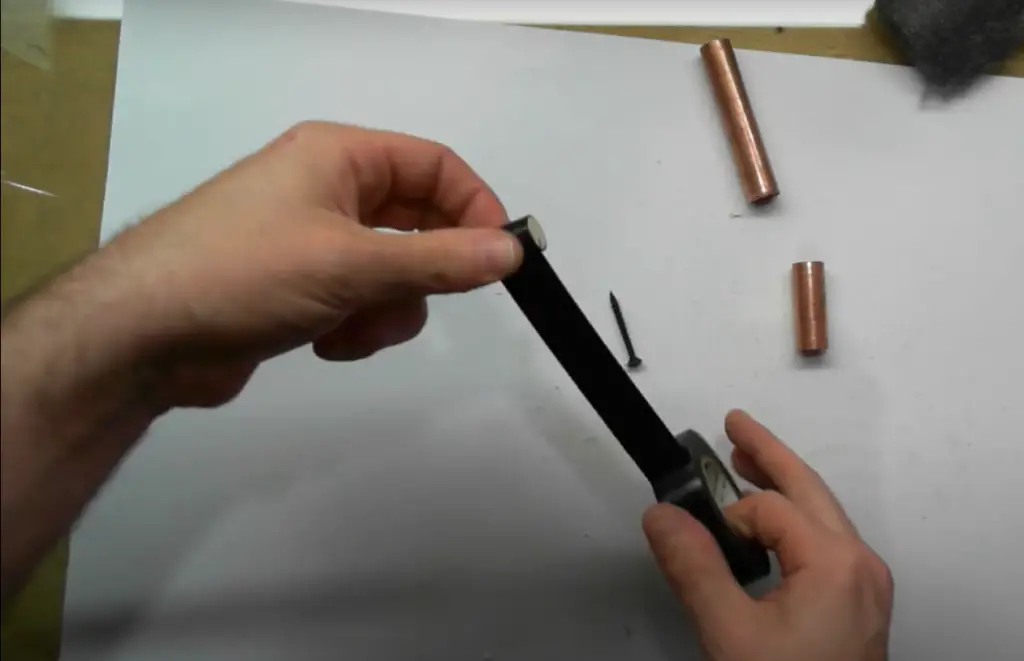
Then, using either a foam brush or paintbrush, start applying the paint. This is a good time to use several thin coats instead of one thick coat for better results. Let each coat dry for about an hour before applying the next one.
Step 4: Clean Up
Once all of the coats have been applied, let everything dry overnight before handling them. Then, remove any tape or rags used and give the pipe a final once-over with a rag dampened with denatured alcohol. Now your copper pipes are ready to be installed [4]!
Why paint copper pipes?
Copper pipes are a great choice for plumbing in your home or business due to their durability and resistance to corrosion. Painting copper piping can provide additional benefits such as an added layer of protection, improved aesthetics, and even increased energy efficiency. A properly painted pipe will help to reduce condensation on the exterior surface, which can lead to water damage or freezing over time.
Additionally, painting copper pipes can offer insulation from noise generated by running water in proximity to other rooms or floors. With its non-toxic properties and low toxicity levels, painting copper is also safer than using traditional plastic piping materials. Finally, painting copper pipes can improve the aesthetic appeal of your home or business as you can choose from a variety of vibrant colors that help add some character to your property.
Overall, painting copper pipes is a great way to enhance the look and longevity of your plumbing system while also adding additional protection from corrosion, moisture damage, noise, and energy efficiency. With proper preparation and application techniques, you can achieve long-lasting results that will help keep your home or business looking great for years to come.
How to maintain copper pipes?
Maintaining copper pipes is essential to ensure good water flow and overall plumbing efficiency. Here are some tips on how to maintain your copper pipes:
- Inspect the Pipes Regularly- Visually inspect your copper piping for any signs of wear or damage regularly. Pay close attention to joints and connections, as these areas are more prone to leaks or other issues. If you see any signs of corrosion, replace the affected pipe immediately.
- Clean Out Scale & Deposits– Over time scale and mineral deposits can build up in your copper piping system which can cause clogs or reduce water pressure. To remove this buildup, you should use a specialized cleaning solution specifically designed for removing scale from copper pipes. Follow all product instructions carefully when using this type of product.
- Protect from Corrosion– Copper pipes can be vulnerable to corrosion if exposed to certain environmental conditions or chemicals, so it’s important to protect your copper piping system from potential sources of corrosion. Make sure to use pipe tape on all joints and connections, as well as wrap exposed pipe in a protective covering if necessary. Additionally, avoid using any harsh cleaning agents on your copper piping that could cause degradation over time.
- Regularly Check for Leaks– It is important to regularly check your copper pipes for any signs of leaking or drips. Look for visible water stains around the base of the pipe or dripping coming from joints or connections. If you spot a leak, take the necessary steps to patch it up right away.
- Use the Right Type of Fittings– Always make sure you use the correct type of fittings when connecting copper pipes, as using improper fittings can cause leaks or other issues. Copper pipe fittings are typically sold in standard sizes so be sure to measure your pipes before purchasing any new parts.
- Contact a Professional if Necessary– If you ever feel that your copper piping system is beyond your skill level, don’t hesitate to contact a professional plumber for help. A licensed plumbing technician has the knowledge and equipment needed to diagnose and repair any issue with your copper piping system quickly and efficiently.
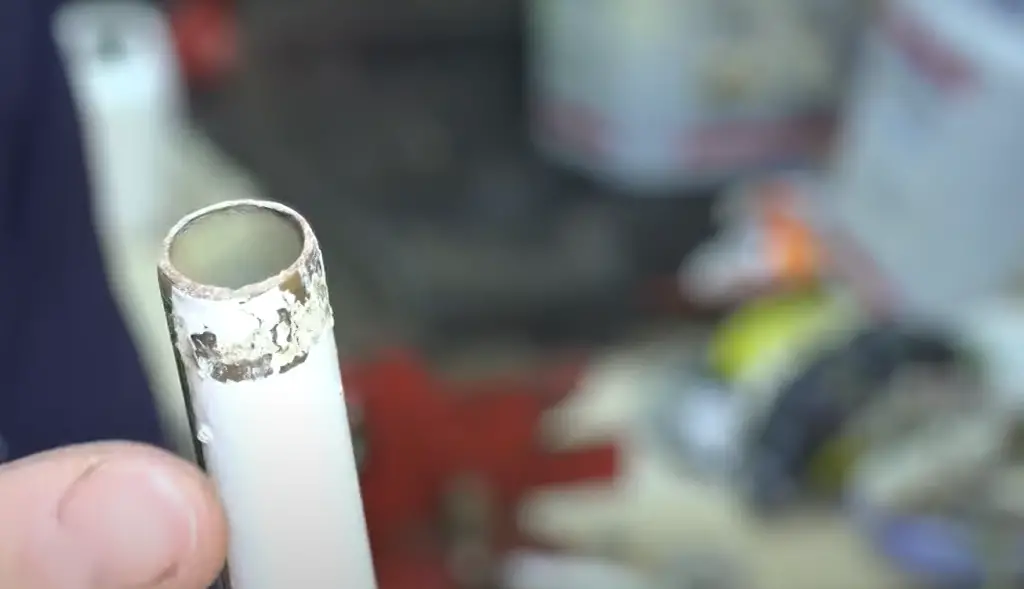
These tips will help ensure that your copper piping system is functioning properly and provide peace of mind that your plumbing system is in good condition. With proper maintenance, you can expect your copper pipes to last for many years.
They will be able to diagnose and repair any issue quickly and safely. By following these tips, you can keep your copper piping system running smoothly and efficiently for years to come.FAQ
What kind of paint do you use on copper pipes?
It is recommended to use copper-specific paint, such as high-temperature paint or epoxy paint. Make sure the product you select is compatible with copper and is specifically made for use on metal surfaces. Always clean the surface of the pipe thoroughly before painting to ensure proper adhesion of the coating. Thin coats applied in multiple layers are recommended so that you get even coverage without any drips or streaks. Allow each layer to dry completely before applying the next one. For best results, finish off with a clear coat or other sealant designed for metals. Follow all manufacturer instructions when using any type of paint on your pipes.
How should I clean my copper pipes?
Cleaning your copper pipes regularly will help keep them in good condition and prevent corrosion. The best way to clean your copper pipes is by using an abrasive material, such as steel wool or a specialized cleaner designed for removing tarnish from metals. Avoid using harsh chemical cleaners that can damage the surface of the pipes. Always rinse off with plenty of water after cleaning to remove any residues left behind. For extra shine, you may want to use a polishing cloth specifically made for metals. Follow all product instructions carefully when using any type of cleaner on your copper pipes.
Is there anything special I should do before painting my copper pipes?
Yes, it’s important to prepare the surface properly before applying paint to ensure proper adhesion and long-lasting results. First, make sure the surface of your pipes is free from dirt, dust, and grease. If needed, use a metal cleaner or polish to clean off any tarnish on the copper. Once cleaned, lightly scuff the surface with steel wool or sandpaper for better adhesion of the paint. Finally, use a tack cloth or damp rag to remove any debris left behind before painting. Always follow all manufacturer instructions when using any type of paint on your copper pipes.
Can I just apply one coat of paint to my copper pipes?
No, multiple thin coats applied in layers will give you better coverage and longer-lasting results than one thick coat. Thin coats also help prevent drips and streaks that can occur with thicker applications. Make sure each layer is completely dry before applying the next one, and finish off with a clear coat or other sealant designed for metals.
Is it difficult to paint copper pipes?
No, painting copper pipes is relatively easy as long as you prepare the surface properly and use the right kind of paint.
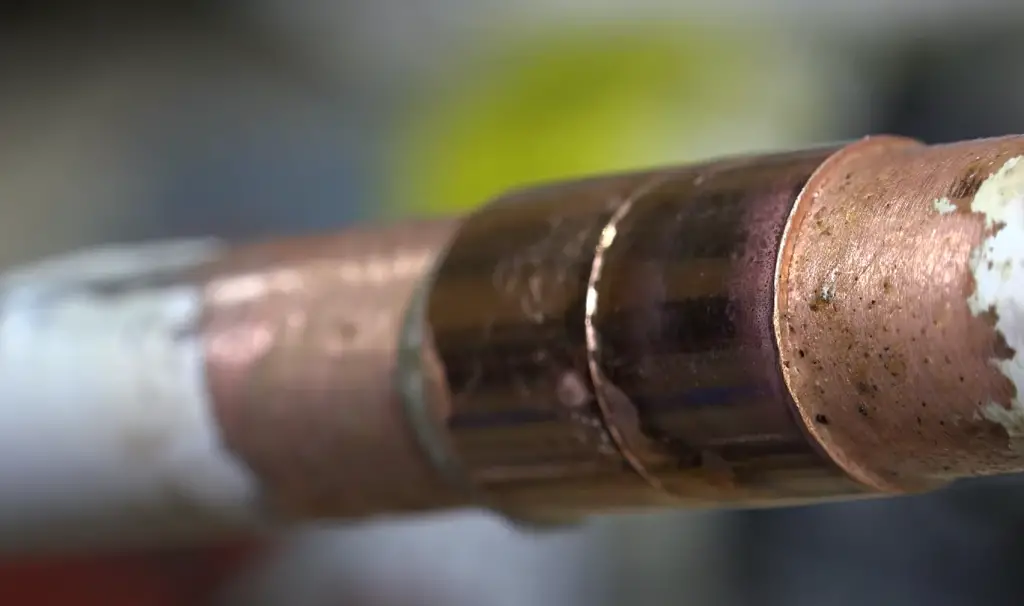
Make sure to select a product that is specifically made for metal surfaces; never use regular house paint on your pipes. Thin coats applied in multiple layers are recommended so that you get even coverage without any drips or streaks.
What happens if you paint copper?
Painting copper can help protect the material from oxidation and corrosion. It also provides a decorative finish that can enhance the look of your pipes. Always make sure to use paint or sealant specifically designed for metals and follow all product instructions for best results.
Does painting copper pipes affect their performance?
No, as long as you use a paint or sealant specifically designed for metal surfaces, your pipes should remain fully functional after painting. Make sure to apply thin coats in multiple layers so that you get even coverage without any drips or streaks. Each layer should be completely dry before applying the next one, and always finish off with a clear coat or another sealant.
How can I make my copper radiator pipes look better?
Painting your copper radiator pipes is an easy way to give them a fresh, updated look. Make sure to select a paint or sealant specifically designed for metal surfaces, and apply thin coats in multiple layers so that you get even coverage without any drips or streaks. Allow each layer to dry completely before applying the next one. For best results, finish off with a clear coat or other sealant designed for metals.
Useful Video: Painting copper pipes
Conclusion
Painting copper pipes is a relatively easy job that can help protect them from corrosion and give them a new look. It’s important to prepare the pipes first by sanding, cleaning, and removing any rust or debris. Once they are clean, you should apply primer before painting them with an oil-based paint designed for metal surfaces. For best results, make sure to wait at least 24 hours between each coat of paint, and always use enough coats to make sure your painted pipes last as long as possible. With these tips in mind, you now have everything you need to get started on your copper pipe painting project!
References:
- https://plumbingsales.com.au/blog/what-are-copper-pipes-used-for.html
- https://www.doityourself.com/stry/basicscopperpipe
- https://homeguides.sfgate.com/can-paint-copper-plumbing-86305.html
- https://plumbingwizard.org/paint-copper-pipes/

